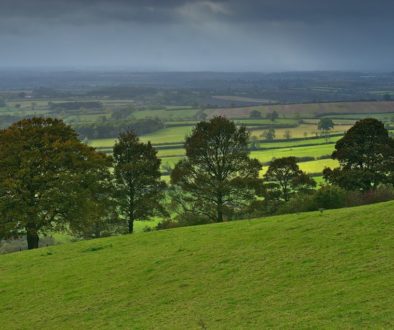Rural poverty – forgotten, not gone
It’s hard to imagine a time when it’s been tougher to live in the countryside. With charities and helplines busier than ever as farmers struggle to cope with the weather, disease and financial woes and the number of people using food banks tripling, there’s acute poverty in rural areas. The reality is many rural residents are struggling to make ends meet. With poverty in the countryside predicted to rise, what can be done to help those at risk and those already falling deeper upon hard times? Jessica Sellick investigates.
When we talk about poverty in the UK today we rarely mean malnutrition or squalor, rather with the introduction of the welfare state back in the 1930s poverty is marked by ‘poor’ people whose level of deprivation is heavily out of line with the general living standards enjoyed by the majority of the population. But what does poverty mean –how do people see it, how rural is it and what can be done to tackle it? I offer three points.
Firstly, the widely accepted definition of poverty is having a household income which is 60% less of the average or median (i.e., the income earned by the household in the middle of the income distribution). In the period 2010-2011 this equated to £419 per week.
In February 2013 the Department for Education carried out a consultation on a new definition of child poverty, calling for this 60% median figure to be included in a new multidimensional measure which would also calculate if a child lives in a workless household, in a family with problem debt, in poor housing, attends a failing school and/or has parents in poor health.
Responses to the consultation varied with the National Children’s Bureau calling upon policy makers to focus on how to eradicate poverty rather than being preoccupied with measuring it; and the Church Urban Fund concerned that a composite Index would lack transparency. In comparison, the Commission for Rural Communities (CRC) throughout its tenure used the term ‘disadvantage‘ to not only include poverty but also limiting factors in one’s life situation (e.g. lack of skills, unequal levels of health and wellbeing).
The debate over the definition – and the utility of the 60% figure – resonates more recently with ‘It shouldn’t happen here‘, a report published by Save the Children documenting some of the experiences of the 3.5 million children already living in poverty in the UK – a figure predicted to increase by 400,000 by 2020. The report illuminates how low-income parents are cutting back on food so their children have enough to eat; with children themselves describing missing out on things like shoes, a warm coat in winter, holidays and school trips.
Studies of poverty are extraordinarily challenging to do and because of this research has tended to provide an urban picture due to the higher concentration of need in towns and cities. Obtaining data and evidence on rural poverty is more complex. For example, the Index of Multiple Deprivation (IMD) can only go part way in providing an analysis of rural poverty, for it focuses upon an area based approach which lacks efficacy when a given population is spread over a wide geographical area. Other indicators such as lack of car ownership are also insufficient due to higher levels of car ownership in rural areas, even amongst low income households, because of lack of public transport. Alongside this, there are gaps in qualitative information on experiences of rural poverty –for example older people who can be asset rich but cash poor, people not taking up means-tested welfare benefits to which they are entitled and/or having poor access to services. Yet understanding these issues and how rural residents can be supported to move out of poverty is a key component of sustainable rural development.
Secondly, what does it mean to be living in poverty in rural England? Taking the numerical measure of 60% of the median income, Defra’s own Statistical Digest of Rural England 2013 reveals in the period 2010-2011,16% of households in rural areas were below the poverty threshold after housing costs compared to 23% in urban areas; 16% of working age people (aged 16 to 64) in rural areas were below the poverty threshold after housing costs compared to 23% in urban areas; and 20% of children and 13% of pensioners were below the poverty threshold.
A Minimum Income Standard (MIS) is an ongoing research programme between JRF and Loughborough University defining what level of income is needed to allow a minimum acceptable standard of living today. Based upon household budgets and what members of the public think, the MIS 2012 found rural budgets to be higher than urban budgets: set at £19,820 for single working-age adults living in a village compared with £16,383 in urban areas.
Whether you take the 60% median figure or the MIS it is important to note that poverty can be concentrated in pockets of rural places, it can be experienced over the course of someone’s life or occur in the short term (e.g. where someone is unemployed for a few months). It is not merely associated with rural residents who are unable to work but also those in work and juggling more than one job – some of it seasonal, temporary or part time leading to low pay. People in rural areas are often more dependent upon the public sector for reasonable employment and have been vulnerable to austerity measures and cuts. According to Professor Mark Shucksmith, Director of the Newcastle Institute for Social Renewal (NISR) this picture will only worsen. Professor Shucksmith is predicting countryside poverty will increase in the next five years among working people, children, and older people and will be compounded by unaffordable housing and increased fuel poverty: “far from the popular perception of benefit recipients as workless and work-shy, more than two thirds of working-age recipients of benefits in rural England are in work already but getting by on low incomes, and this proportion is increasing. Many of these hard-working people in rural England will suffer further as a result of the cuts in welfare benefits and loss of public services.”
Thirdly, how can we support those at risk of or already living in poverty? Policy and decision makers need to take account of the very real but dispersed nature of rural poverty and deprivation when formulating their interventions. Poverty has various components – it is not merely financial/income related but also linked to access to employment, education and health services and the level of community spirit that exists and can be harnessed to provide people with emotional and practical support. Many rural organisations already seek to ameliorate some of the negative impacts of poverty by joining up their intelligence and actions. For example, local organisations can map the dependency of rural residents on public sector employment and/or benefits to identify those most affected by public sector cuts and welfare reform to help them to establish a contingency plan. Local organisations can also develop a directory of other groups whose activities align, complement and enhance their own activities. These local organisations are embedded in rural communities and people feel a sense of ownership in them and the support they provide. These community activities and preventative work could go some way in helping policy and decision makers focus their interventions on rural people rather than the spatial approach often taken in targeting programmes.
What remains clear is that poverty is an important dimension of rural life, albeit one that is often hidden and poorly addressed. Sadly poverty remains a fact of life for many people in rural England today.
The RSN is holding an event on poverty, deprivation and inequalities on 21 May 2013 at Teesside University’s Darlington Campus. The event will include presentations from David Hunter (Durham University) on the impact of the Government’s health reforms, Joyce Liddle (Teesside University) on the Adonis Review, Liz Charles (Durham Rural Community Council) on fuel poverty and Jon Carling (formerly of the Commission for Rural Communities) on what it’s like growing up and getting old in the countryside today.For more information and to book your place at this free event please contact Wendy Cooper by email wendy.cooper@sparse.gov.uk or telephone 01822 813693.
Jessica is a rural practitioner at Rose Regeneration which has particular empathy and enthusiasm for rural and coastal issues. She recently led a project for Oxfam on farm poverty and is currently undertaking research for the Royal Agricultural Society of England (RASE), The Farmer Network, Cumbria Fells & Dales and Solway Border & Eden Local Action Groups (LAGs) and The Princes Countryside Fund to understand how farmer networks operate; and research for Defra on alternative models of service delivery. Jessica can be contacted by email jessica.sellick@roseregeneration.co.uk or telephone 01522 521211. Website: www.roseregeneration.co.uk


